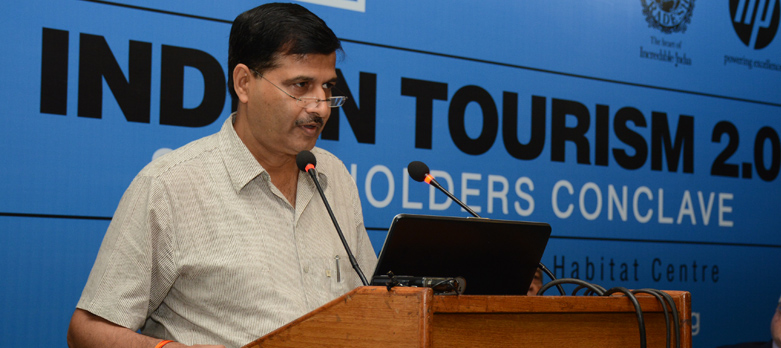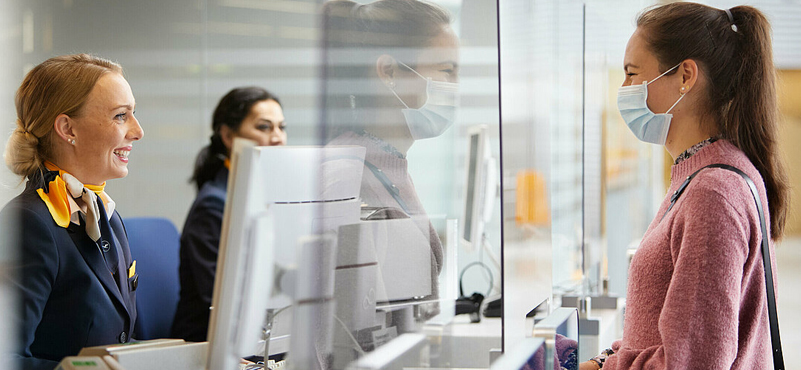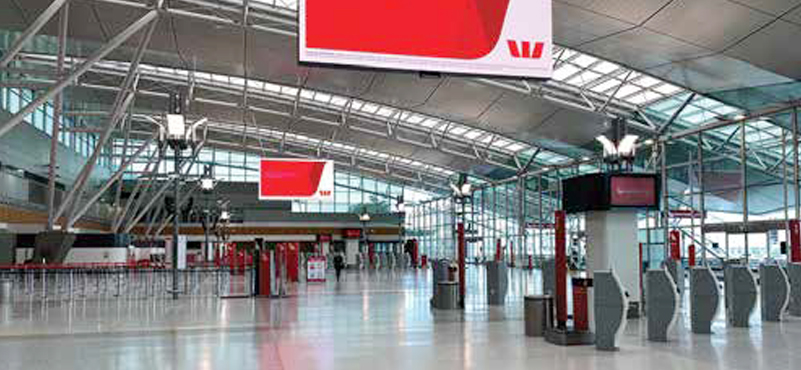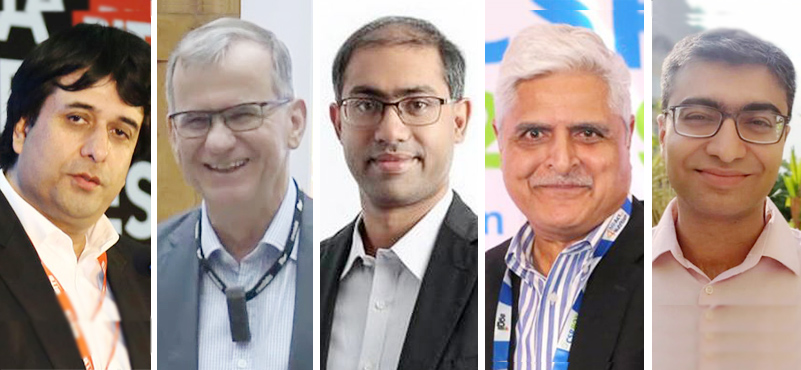Air India has a new CMD in Ashwani Lohani set to take over. Lohani’s choice is most welcome, given his past credentials for thinking out of the box, finding solutions in his earlier assignments as chief of ITDC and also three times as MD of Madhya Pradesh Tourism, apart from his stint as divisional regional manager at Indian Railways in Delhi, the biggest and most prestigious railway division in the country, where he was instrumental in giving the railway station a dramatic new look. He has obviously understood the nuances of turning around public sector agencies in the services sector, and is an ideal choice for Air India. That the government has made him both chairman and managing director (the last incumbent was only the MD over four years) is also a direct indication that he enjoys the confidence of his bosses and that he has a wider mandate to effect drastic overhaul and bring about a transformation in India’s flag carrier.
Every new dispensation offers an opportunity for change. Yes, Air India has been doing better in the last year or so, has done well to have eventually joined STAR Alliance which is a strategic asset, and the Dreamliner fleet appears to have finally settled down. But these improvements have been still below expectations and the losses continue to mount – till when will the government go on with subsidizing the airline? It is also understood that the government means business, wants to continue running the airline and that there are no plans for privatization.
So, what are the challenges before Mr. Turnaround, an expression that seems to have grown upon Ashwani Lohani? First and foremost, we believe we will do well to separate the legacy debt burden and its servicing from the operational side. Ideally, we believe the legacy debt should be handled separately, either within the airline or even by the Ministry of Civil Aviation and the government must take care of that part of the debt which any new dispensation cannot be blamed for. This debt should not colour the everyday performance of any new operational team. The operational side should be left for the new management and ideally this is what they can be rightly judged for. And there are numerous yardsticks that one can go by. Market share, yields on routes, turning around specific sectors, and in fact improving the performance of the airline, restoring some of its old and tarnished glory.
So, what are the challenges, and where are the solutions? We will do well to remember, in the historical perspective, that this present day Air India also includes the erstwhile Indian Airlines, which it was amalgamated with. That each of the two carriers were leaders in their respective territories – one within India and the other outside. Each enjoyed the highest market share, and had sufficient brand value to be the chosen and preferred carrier. Both merged and started losing, while new entrants arose and increased business. In both sectors, it lost market shares, prestige and also money. That bit is now clearly history, but important for recall. Air India has therefore two battlefronts, a position that is presently shared only with Jet Airways – no other airline has significant operations in both domestic and international. Jet has already married Etihad, and now serves first the Abu Dhabi hub. Flying both domestic and international, that leaves only Air India to serve Indian aviation and tourism.
We would recommend that any new revival strategy must look at each separately; first become the market leader in each – domestic as well as international. Don’t make domestic routes subservient to foreign operations and lose the domestic advantage – see the success of Indigo and Spicejet to understand that there is a market, now exceeding 70 million annually. Let domestic be driven by domestic considerations and international be serviced with select international penetration, otherwise through STAR Alliance partners. But it should be the preferred carrier on every route that it serves. For instance, it should have double daily frequencies to London from Delhi, Mumbai and Bengaluru if not also Chennai. Beyond London, it can sell on any STAR partner, whether it is United to USA, Air Canada to Canada or to Germany and most of Europe on Lufthansa and its owned sister airlines, namely Swissair and Austrian. Air India’s flights to London should be direct, and not stopping via Amritsar and elsewhere. It should stop doing lip service to routes, merely because it too must be there. It has the best aircraft, and it must ensure they are also providing the best experience to make them the carrier of choice. Internationally, Air India does not offer the best product – Lufthansa is better to Germany and British Airways for London. So is Singapore to Singapore and Thai to Thailand, you are not the strongest. Then why make your domestic subservient to an operation that is not the best?
There is considerable merit in looking at domestic and international operations under separate teams – even more so on route strategy and its commercial operations? One can only wonder how Indigo has five flights daily direct between Delhi and Goa and Air India has only one. Even Vistara has two already?
Our other contention is that in their first forays, when Air India and Indian Airlines were kings in their domains, their first priority was India’s tourism. This seems to have been forgotten over the years. It is our belief that tourism should and could become the bedrock of their revival. On pure commercial terms, it would be a different challenge to compete with the private and international airlines. But if a tourism first approach is adopted, it can change the rules of the game. Internationally, Air India’s partner could well be the Ministry of Tourism, and domestically, it should be the different states that it serves across the country. It should make a fresh selection of cities that make sense to Indian tourism, both for domestic and also for inbound, and make sure it becomes the preferred choice of travellers, with frequency, timings and pricing. It could do well with the revival of erstwhile promotional programmes such as its successful Stop Over tours. It is the only airline that can immediately hub over the main Indian metros. It should forge mutually sustainable alliances with the airport operators who would be more than keen to do so, with the concerned state governments and also the central Ministry of Tourism.
Very often we have heard that in today’s world, there is no room for a flag carrier. We do not agree with this logic. Whether it is privately held or government owned, every worthwhile international airline is serving the cause of its home base, in terms of tourism and its civil aviation. Take the case of Emirates and Dubai Tourism, or that of Abu Dhabi and Etihad, or that matter even Lufthansa for Germany and British Airways for Britain. The story is no different for Thai Airways and Thailand and for Singapore and Singapore Airlines. There is a home market, a home base, and the country’s tourism inter twined and working for each other. This symbiotic relationship seems to have snapped between Indian tourism and Air India – it is not surprising that Indian tourism decline was in that same period when Air India started its fall. Our belief is that both need each other, and the sooner they start working together again, the better for both.
Management expertise could be a challenge. It will need fresh talent, the best in the world. The private sector has no problems in recruiting whom they want and at whatever cost. It is our belief that some degree of intervention is desirable, possibly with consultants. Over the years, it is possible that some talent has eroded, making it difficult to compete with the best in many departments including technology to give the airline the required reach and penetration. Some of this talent may be available with its STAR partners the airline must be willing to recognize the need for such talent and be open to bringing fresh infusion of talent. Today, more than sales offices, travel is sold on the internet – we must have the best technology to fight competition. Presently, many of the old timers are either retired or about to. A young crop is coming up the ranks, and many of them remain relatively inexperienced though eager to learn. The older guard was also de-motivated with frequent assaults from the media and the political bosses and the travelling public. Restoring confidence must be the first priority for the new team – for all stakeholders – how this can be done will remain a challenge. Each of these segments feed upon each other, and who will start the process of instilling confidence remains to be seen, perhaps all need a freshner at the same time.
Lastly, and most importantly, Air India is a PSU and also an airline. Many of its problems will relate to PSU issues but not all. Many of the vital challenges it faces are aviation linked. Fortunately for Air India, fuel prices are at the lowest in years, giving the airline much needed relief on ATF prices. But the larger aviation picture is complex, and running an airline a most complicated exercise – witness the churning seen over the global scene. Lohani will need to tread cautiously on these, as his progress will be watched eagerly by many, most of all by competition, that will be too eager to see him make mistakes!




































